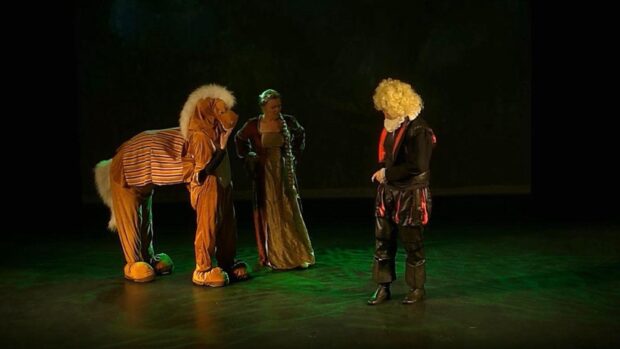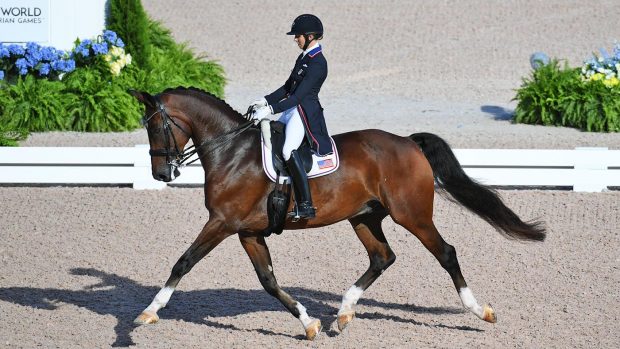The owner of a mare whose foot was “half cut off” by barbed wire in her field wants to raise awareness of the dangers of such fencing.
Olivia Yendall discovered her eight-year-old Welsh section D mare April had suffered the “horrific” heel wound when she went to check her with her father on 13 May.
“We didn’t think she was going to make it,” Olivia told H&H. “When she walked, her foot was nearly hanging off. It was like a razor blade had just cut half her foot off.”
Olivia found the lower of two strands of barbed wire was broken, so believes April had put her foot over it, become stuck and pulled back.
She called her vet, Seadown Veterinary Group in Southampton, immediately, and the mare spent 10 days in hospital.
Seadown equine vet Breda McDonagh described the wound as a “horrific” one, which extended deep into the foot, and “posed a very real threat for sepsis of synovial structures in the foot, the pedal bone and soft tissue injury – not to mention the risk of systemic infection”.
The mare was given antibiotics and her wound was dressed but by good fortune, Derek Knottenbelt and Georgie Hollies from the Veterinary Wound Library were visiting the clinic that week. A machine called the Versajet, which “powers” pressured saline solution via a hose into the wound and has been used to treat severely wounded soldiers in war zones, had been set down ahead of their visit.
Warning, graphic video:
“My first reaction was that the wound was horrendous,” Professor Knottenbelt said.
“In reality, the horse had no right to survive; the tendons, tendon sheath, joints and ligaments all seemed to be damaged. When I opened it up, I could see a lot of contamination and dead tissue. By the grace of God, April could still walk so that make us think that by some miracle the tendon sheath was intact.”
The Versajet removed bacteria, to prevent infection and promote healing, then to stop movement, which inhibits healing, the vets applied a bandage cast.
“This was the turning point and from here on, the wound effectively did the job itself and continued to heal at a relatively rapid pace,” Ms McDonagh said.
“April was managed with two further bandage casts, the last one a foot cast which stayed in place for two weeks. She is currently on a rehab programme, she is very comfortable and the wound has changed dramatically, to the point it is hard to imagine how it looked in the first place. Now we are optimistic the wound will heal completely.”
Olivia said April is on box rest, at a new yard with no barbed wire on site.
“She was really lucky not to have damaged anything vital; she was a millimetre away from cutting her tendon,” Olivia said.
Continues below…

‘Fairytale ending’ for pony injured in horrific acid attack
The equine hospital wishes to publicise the filly’s great recovery to thank everyone who contributed towards her care

Horse who defied the odds to survive sickening stab attack is heading to Hickstead
The much-loved gelding has recovered from the 16 wounds inflicted on him, to return to the show ring

Subscribe to Horse & Hound magazine today – and enjoy unlimited website access all year round
“I didn’t think she was going to make it but hopefully in a year, she’ll be fine; it’s testament to the Seadown vets and nurses and Derek and Georgie that April is here with us, standing and walking and back to her old self.
“I never knew how dangerous barbed wire could be and hope April’s story will help show others just how perilous wire can be to all horses.”
Professor Knottenbelt hopes the injury will barely be noticeable in a year’s time.
“It’s a wonderful outcome for what was a very, very serious injury and one April had no right to survive,” he said. “I must also praise the Seadown vets and nurses, who were meticulous in their treatment and care.”
For all the latest news analysis, competition reports, interviews, features and much more, don’t miss Horse & Hound magazine, on sale every Thursday.




